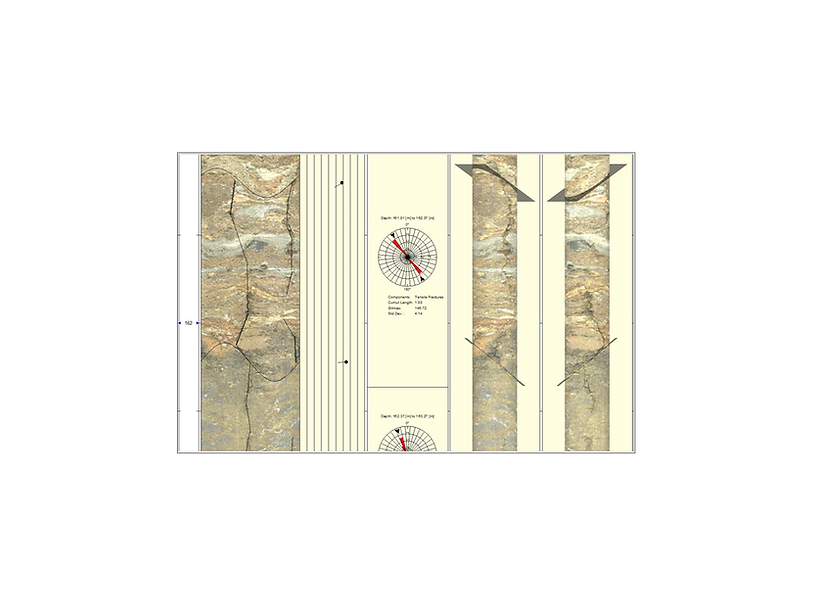



Rock mass stress analysis
By means of these probes it is possible to carry out a structural analysis and define precisely which is the orientation of the horizontal tensional stresses (SH and Sh), a fundamental parameter in projects. that involve the excavation of galleries, tunnels or caverns at a high depth.
BOREHOLE LOGGING
The "borehole logging" consists of the continuous recording of one or several physical parameters throughout it, using probes that move inside.
The physical properties or parameters measured include spontaneous potential, electrical resistivity, natural radioactivity, temperature, conductivity and water flows, speed of mechanical waves, image of the borehole walls, caliper, etc.
The information obtained through this process is usually represented in a usual way in a document in which the depth is located on the vertical axis and descending, while the measured parameters are located on the horizontal axis. This document constitutes the record or diagraphy.
The interpretation of the different records or of the variations that occur allows to characterize the geological formations traversed by the drilling.

Trayectometry
From the measurement of Tilt and Azimuth, and after calculating the data corresponding to Easting, Northing and TVD, it is possible to define with millimeter precision the trajectory followed by the drilling, placing the data obtained by other probes in the correct place and without error , as well as the data corresponding to structural and stress analysis.



Structural analysis
The structural analysis that can be carried out using these probes allows a detailed geological study of the orientation of the different families of joints and fractures that can affect a rock massif. From the apparent orientation of the joints and applying the corresponding data to the trajectometry, the real orientation with respect to magnetic north is obtained.

Spinner Flowmeter
From the analysis of the speed of rotation of the propeller of the probe and together with the measurement of the flow extracted by pumping during data recording, it is possible to define precisely the flow dynamics inside the borehole or well, delimiting zones of water supply or output, calculate in percentage terms each of these areas, as well as quantify the volume that the different sections contribute or lose after processing and analyzing the data obtained.



Full Wave Sonic
The measurement of the sonic velocity Vp and Vs makes it possible to assess the state in which the testified rock mass is found, obtaining the parameters corresponding to the dynamic modulus of deformation (Young, Shear, Rigidity) and Poisson index and to define the position of faults o fractures Likewise, it is possible to perform an analysis to obtain information on permeability or to define whether the cementation of a tubed area is correct or not.
Natural Gamma / Normal Resistivity 16"- 64", Spontaneous Potential (SP), Point Resistance (SPR)
The resistivity of a geological formation expresses the opposition it presents to the passage of electric current, and is expressed in Ωm.
It is an anisotropic property, since the particular conditions of the geological formations studied generate preferred directions in the circulation of fluids, therefore, the resistivity values vary depending on the orientation of the stratification, foliation or fracture planes, as well as the composition of the fluids crossed by the drilling and existing at a given depth.
The presence of metallic minerals, massive sulfides and, in general, most clays have low resistivity values, since they are conductive formations. Crystalline materials, on the other hand, have very low conductivity, and therefore, high resistivity.
